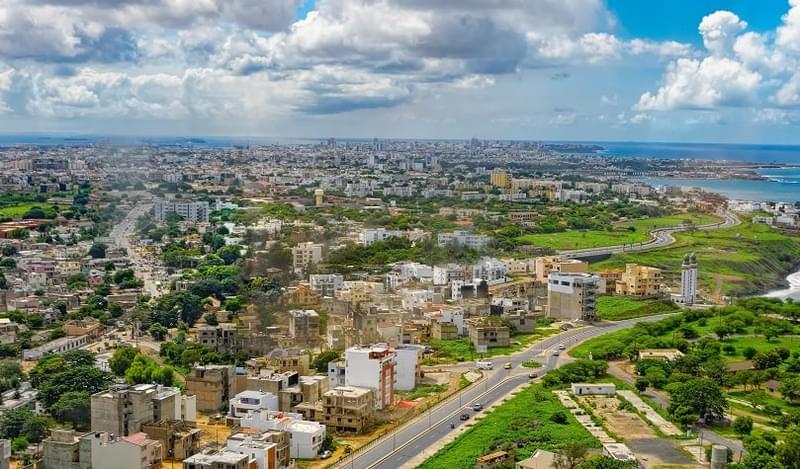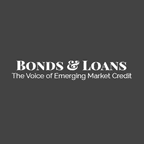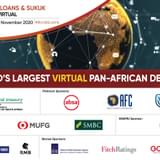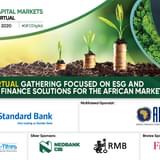The leadership of the city of Dakar, the capital of Senegal, spent years of hard work and millions of dollars increasing investor perceptions of municipal creditworthiness, designing economically-sustainable long-term capital investment projects, and arranging a guarantee with the United States Agency for International Development to cover a significant portion of the transactional risk associated with the city’s virgin bond issuance. Flawless in its design, the region’s first municipal bond was ultimately unsuccessful in execution due to external factors associated with local politics and constitutionality. Nonetheless, and like its sister cities across Africa (most notably the Ugandan capital of Kampala), the experience of Dakar is illustrative of the emergence of sub-sovereign borrowers at the municipal level in the global south.
Regardless of their geographic location, cities interested in accessing finance for projects related to economic growth and development are challenged due to weak knowledge of the tools that can be used to raise finance beyond traditional tools like taxes, grants, user charges and lease income. Traditionally, cities have financed their operations, including infrastructure needs, through taxes collected by the entire population (either own-source revenue or through redistribution from a higher level of government). Increasingly, to cover non-operational investment needs, institutional investors, companies and foundations have been providing a large source of private capital. The link between different private actors, particularly when considered relative to sustainable development, has varied widely.
Some cities have experimented with more creative approaches, including land value capture, public-private partnerships, borrowing through bilateral relationships (loans) or multilateral capital markets activities (bonds). Those cities that are most successful in accessing finance are ones that meet certain basic criteria in four broad categories: enabling environment, municipal capacity, project financial feasibility and investor appetite. The national enabling environment should be one where (1) the national government is committed to providing access for local governments to private finance to address key urbanization needs and (2) institutional and economic conditions exist that make such access feasible. The municipality itself should (1) have a clear governance structure with transparent and participatory decision-making, (2) provide, on a regular basis, a budget and year-end accounting that is built upon documentable financial planning, and (3) continually design and revise its long-term strategic development and capital investment plan to reflect the needs of its citizens. Cities should have a clear sense of the projects that they wish to finance; regardless of the financing mechanism, all projects should generate sufficient revenue from willing and able users to guarantee long-term project financial sustainability. Project finance is ultimately not feasible without sources of capital; cities will need to source capital directly from domestic/international financial institutions or partner with private sector operators who will likewise seek long-term financing for project execution.
Although ultimately unsuccessful in its attempt to launch West Africa’s first city-level bond, the experiences of Dakar can be instrumental in informing investors and practitioners about some of the obstacles facing cities in the global south when structuring a financial transaction intended to raise money from debt capital markets for a long-term, capital-intensive, revenue-generating project.
In the fall of 2011, the City of Dakar received a $500,000 grant from an external donor to analyze the feasibility of launching the region’s first bond. Dakar was uniquely positioned amongst its peer primary cities in the region due to its (1) visionary leadership, (2) adoption of a strategy to address urban planning, and (3) past performance as a borrower from external sources.
Mayor Khalifa Sall, elected in 2009, recognized that the city needed to introduce innovative financing to deliver on important development goals or improve the quality of life of the urban poor. He had been successful thus far in fulfilling his campaign promises, which strongly influenced popular perception on the likeliness of delivery on any financial obligations. Further, municipal leadership had committed to establishing a Department of Planning and Sustainable Development; the municipal council had already approved plans to fund this key agency by the start of 2012. One of its first tasks was to write the city’s long-term strategic plan in time to be publicly announced at the triennial Africities conference, scheduled for December 2012 in Dakar.
In 2008 under the previous mayor, the City of Dakar had signed a loan with the French Development Agency (AFD) to fund a program to furnish the city with street lights along well-traveled thoroughfares. This loan was the first of its type from a European power to a west African capital city without a central government guarantee of repayment. It demonstrated a belief from external lenders that the City of Dakar could be viewed as a creditworthy borrower. This loan was possible without a central government guarantee because language in the constitution granted municipalities across the country the power to enter into long-term debt obligations without central government intervention.
At the start of the Dakar Municipal Finance Program in the fall of 2011, the city seemed far from being a solid candidate to pioneer a sub-Saharan Africa municipal bond. A financial forecast showed that its trends were unfavorable, as demonstrated by the ever-increasing deficit in the year-end accounting. Moreover, the city lacked a comprehensive long-term strategic plan with clear priorities to improve the quality of life for the average citizen, let alone someone classified as “the urban poor.” On paper, the city was unable to sufficiently demonstrate to potential institutional supporters of a municipal financial transaction that it was creditworthy or had solid, well-conceived investment projects.
With the help of data compelling action plan and a convincing argument from the city’s municipal leadership, however, the municipal leadership convinced an external donor to support initial exploration that helped to form the future of the Dakar Municipal Finance Program.
By early 2011, the City of Dakar had committed itself to embark on a multi-year journey to become creditworthy and bankable for a sub-sovereign issuance to fund urban improvements. But of course, Dakar is a sub-sovereign city within a country, so for the bond markets to evaluate Dakar, they would need a view on the Republic of Senegal itself. Dakar and its advisors concluded the time was right, because in 2011, at the start of the Dakar Municipal Finance Program, Senegal had these capital-positive characteristics:
1. Unlike many of its neighbors in francophone Africa, Senegal was politically stable, having enjoyed continued peace and smooth transitions of power since independence in 1960.
2. Senegal’s macroeconomic environment was relatively stable; interest rates were hovering around 3.5%, and over the previous six months, inflation was a low 2.6% to 3.1%.
3. Domestic demand for bonds was strong, as the central government had issued sovereign bonds on the local market; since its 1996 founding this bourse, governed by the CREPMF, had steadily grown in the size and issuances.
Further, under Senegal’s constitution (as per the 1996 amendment), cities were legally authorized to issue long-term debt, and in fact the city of Dakar had twice borrowed on its own, not through the bond markets but via direct loans from development finance institutions (DFIs) and commercial banks.
When the leadership in Dakar decided to pursue the process of launching a municipal bond, it faced all these challenges, and the mayor realized the city needed a donor (to fund most of the pre-launch costs) that could also be a guide and confidant. He also understood that though the bond launch itself was the ultimate prize, the activities before bond launch would produce outcomes that donors value: increased transparency, stronger financial control and budgeting in the city’s government, participatory budgeting and establishment of city policy priorities, strengthening and formalizing the informal economy, and including the urban poor’s voice in the dialog about the city’s future. So the mayor also made finding the donor a personal priority, and committed that some of the city’s staff would be dedicated to the project once the donor funding was secured.
Through contacts already made with the major DFIs, as well as outreach to the long-time foundations and philanthropies committed to the urban poor, the mayor was able to zero in on a handful of potential donors that could be approached, with the right preparation and evidentiary support, with a proposal for the entire long-term vision. Dakar was fortunate in that the mayor’s search brought the city to the Bill & Melinda Gates Foundation and its Urban Program within the Special Initiatives Group. That fit worked, and after an intensive six-month period of developing the grant application, the multi-year grant was approved in the summer of 2012 and the city was able to put in place an internal and external team with a mandate to pursue the goal.
Once the team was fully staffed, the Dakar Municipal Finance Programme’s work focused on preparing the city to access funds from local sources for capital-intensive projects. With the financial support of the Bill & Melinda Gates Foundation and a team of skilled experts ready to start work, the leadership of the City of Dakar directed the Program Management Unit (PMU) to select and then analyze the feasibility of priority projects identified by the city’s recently created Department of Planning and Sustainable Development. The PMU readily rejected two kinds of projects: those attractive to the private-sector for their revenue-generation but unable to meet development goals and those attractive for development goals but unable to meet private-sector expectations. An example of the first kind was a centrally located pay parking garage and of the second was new recreational fields or refurbishments to city-owned buildings used for district council meetings.
Through a consultative process involving district leaders, non-governmental organizations, and other key stakeholders, the city ultimately identified a project that satisfied both development and private-sector goals: the construction of a marketplace for more than 4,000 street vendors. Vendor groups and other trade unions had been working closely with the city for months to select an ideal location for a new hall that would be able to offer affordable rates to street vendors.
The investment project met three leading criteria:
- Delivering a key development priority, as described in the city’s strategic plan
- Meeting private-market expectations through having a clearly defined revenue stream
- Garnering stakeholder support through collaborative decision-making
The case study of the City of Dakar ends sadly, unfortunately. Despite earnest efforts by all involved stakeholders, the city was ultimately unable to bring its bond to market due to a misalignment between the political objectives of the national and local leadership. As of the time of this writing, there are still ongoing attempts to encourage the government to change course back to its original approval (which was revoked on the eve of the bond launch); fortunately, this illustrative example does nothing to dim the enthusiasm of visionary leaders in other cities across sub-Saharan Africa seeking to replicate the process, if not the outcome, of the Dakar Municipal Finance Programme.
While the ultimate goal of a typical bond issuance is to raise sufficient funds in the debt capital markets to deliver a project, there are also several spillover benefits, particularly for first-time issuers. To demonstrate their financial sophistication, cities often increase their transparency in developing budgets, enhance their abilities to make long-term financial projections, and introduce participatory budgeting. Further, investors expect cities to propose economically sustainable, revenue-generating projects; this often applies an otherwise unseen rigor to the project selection process. Finally, developing cities that pioneer financial innovations may profit from international recognition, leading to intangible benefits.
Initiatives like that in Dakar are welcome, not just for the benefits they bring the city’s residents, but also for their potential to shape the efforts of other cities. Dakar’s experience will provide valuable insights into the enabling conditions that allow cities to have direct access to commercial finance. Only with such changes will municipalities and urban utilities be able to cope with the increased demands of urbanization.





